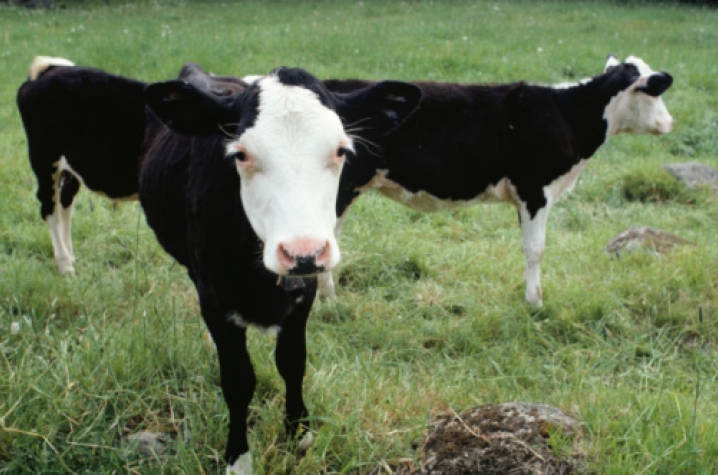UK Ag Takes Lead in Caring for Environment

LEXINGTON, Ky. (Dec. 10, 2010) − As a state that is world renowned for its horse industry and the largest beef cattle producer east of the Mississippi River, pastureland is vital to Kentucky agriculture. A lack of conservation practices and overgrazing, however, can cause problems in riparian ecosystems including erosion and water-quality issues.
To help livestock producers understand the effects grazing can have on water systems and the environment and ways they can be better stewards of the land, Steve Higgins and Amanda Gumbert, researchers in the University of Kentucky College of Agriculture, are installing best management practices at UK’s Research and Education Center in Princeton that will serve as conservation demonstration sites.
Their project is funded by a $315,000, 3-year grant the Kentucky Division of Water received from the U.S. Environmental Protection Agency. The Kentucky Division of Conservation is administering the grant.
Several unnamed blue-line streams, which remain full for most of or all of the year, run through the Research and Education Center, and the center drains into the watersheds of three different creeks—two of which are listed as impaired and in nonsupport of warm water aquatic habitat.
Overgrazing can lead to gully erosion, where surface water removes the soil along drainage lines. A common practice to control this type of erosion on pasturelands is for producers to create barriers in the gullies using hay bales or storm debris. As part of the project, the researchers will install engineered structures, which are considered best management practices for controlling this form of erosion, as well as examples of practices typically seen in Kentucky. This will allow producers to compare and contrast each system to see which method works best, said Higgins, director of environmental compliance for the Kentucky Agricultural Experiment Station.
Another unique demonstration project will be the installation of winter feeding concepts. Two systems are planned for this project: winter woodland feeding and winter confinement structures. The winter woodland feeding area allows cattle to use trees as shelter during inclement weather.
“We’re going to demonstrate how to establish this correctly so it complies with forest best management practices and continues to improve livestock production,” Higgins said. “We’re going to do a fenced exclusion to isolate the cattle from the majority of the forested area. We’ll also install diversion ditches in the wooded area and fence the cattle off from the rest of the forest.”
The winter confinement structure is a Natural Resources Conservation Service design that will be showcased as part of this project. It is a simple structure designed to make winter feeding easier and more cost effective, because it reduces labor, fuel and forage losses. The design can also be incorporated and used in conjunction with rotational grazing systems.
Some of the other best management practices on display at the center will include clean water diversion, alternative water sources, nutrient management and mortality compositing. Producers will get to see these practices during various field days hosted at the center, including Beef Bash and the All Commodity Field Day.
“These best management practices will protect water quality and improve livestock production,” Higgins said.
In addition to educating field day participants, the researchers plan to develop extension publications on several of these best management practices. The publications will serve as how-to guides and will be available for those who cannot attend the field days.




